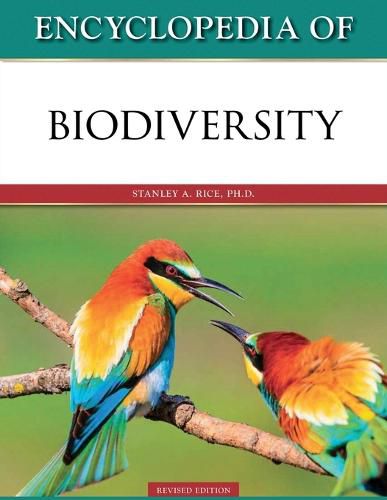Readings Newsletter
Become a Readings Member to make your shopping experience even easier.
Sign in or sign up for free!
You’re not far away from qualifying for FREE standard shipping within Australia
You’ve qualified for FREE standard shipping within Australia
The cart is loading…






Biodiversity and ecology are founded in evolutionary science. In order to understand why species of organisms occupy different parts of the world, it is important to comprehend how they evolved.Encyclopedia of Biodiversity, Revised Edition examines this evolutionary framework with the help of more than 150 entries and five essays averaging at least 2,000 words each. High school teachers can use these entries-grouped by topic-to meet many of the science education goals established by the National Academy of Sciences. Written by a leading expert in the field, this comprehensive, full-color encyclopedia makes information about groups of organisms (from bacteria to mammals) and about ecological concepts and processes (such as biogeography and ecological succession) clearly and readily available to students and the general public. Tables at the end of each entry have a consistent structure, allowing readers to see how environmental conditions and biodiversity have changed through evolutionary time.
Entries include:
Acid rain and fog Biodiversity in the Jurassic period Darwin's finches Galapagos Islands Peter and Rosemary Grant Life in bogs Natural selection Population genetics Seedless plants Tropical rainforests and deforestation Alfred Russel Wallace.
$9.00 standard shipping within Australia
FREE standard shipping within Australia for orders over $100.00
Express & International shipping calculated at checkout
Biodiversity and ecology are founded in evolutionary science. In order to understand why species of organisms occupy different parts of the world, it is important to comprehend how they evolved.Encyclopedia of Biodiversity, Revised Edition examines this evolutionary framework with the help of more than 150 entries and five essays averaging at least 2,000 words each. High school teachers can use these entries-grouped by topic-to meet many of the science education goals established by the National Academy of Sciences. Written by a leading expert in the field, this comprehensive, full-color encyclopedia makes information about groups of organisms (from bacteria to mammals) and about ecological concepts and processes (such as biogeography and ecological succession) clearly and readily available to students and the general public. Tables at the end of each entry have a consistent structure, allowing readers to see how environmental conditions and biodiversity have changed through evolutionary time.
Entries include:
Acid rain and fog Biodiversity in the Jurassic period Darwin's finches Galapagos Islands Peter and Rosemary Grant Life in bogs Natural selection Population genetics Seedless plants Tropical rainforests and deforestation Alfred Russel Wallace.